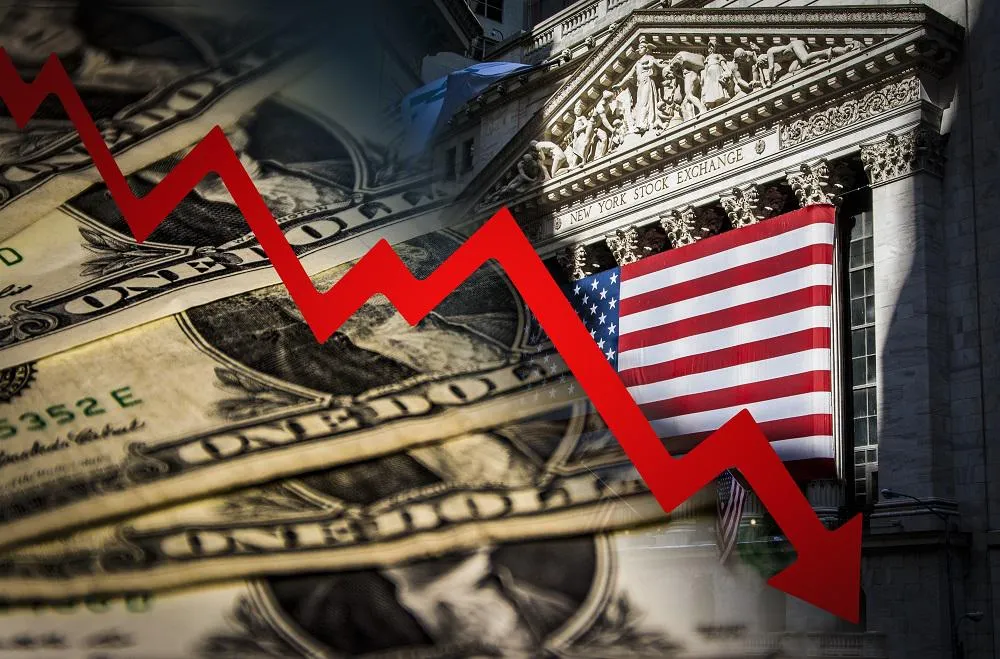Federal Reserve documents released Wednesday predict that the U.S. economy will slip into recession later this year due to the fallout from the banking crisis.
Staff members presented a presentation on the potential repercussions of Silicon Valley Bank's failure and other financial sector turmoil at the March meeting of the Federal Open Market Committee.
Despite Michael Barr's assurance that the banking sector "is sound and resilient," staff economists expect the economy to suffer.
A mild recession would begin later this year, with a recovery over the next two years, the staff predicted at the March meeting, based on their assessment of the potential economic effects of recent banking-sector developments.
According to forecasts following the meeting, the economy will grow just 0.4% in 2023. An Atlanta Fed report that shows the economy gained 2.2% in Q1 would indicate a pullback later this year.
Some had speculated that it might be a safe bet for the Fed to keep rates unchanged, but officials clarified that they needed to do more to bring inflation under control.
In the end, FOMC officials decided to raise the benchmark lending rate by 0.25 percent, which marks the ninth time in the past year that the FOMC has raised the borrowing rate. It is important to note that this brought the Fed funds to rate up to its highest level since the end of 2007; 4.75%-5% was its target range.
In the same week as Silicon Valley Bank collapsed due to a run on deposits, the Federal Reserve hiked interest rates less than two weeks after the bank had been the 17th largest bank in the United States. In the aftermath of the failure of SVB and two others, the Federal Reserve created emergency lending facilities in order to ensure banks could continue to operate during this difficult time.
The data on inflation have mostly cooperated with the Fed's goals since the meeting, according to the Fed. According to officials at the meeting, they believe that prices will continue to fall in the near future.
“It is anticipated that core inflation will decline sharply next year as a result of less projected tightness in the labor and product markets," stated the minutes of the meeting.
Although the banking crisis heightened concerns over broader economic conditions, they remained high. Fed officials opened a new borrowing facility for banks after the collapse of SVB and two other institutions and relaxed the requirements for emergency loans at the discount window after these institutions collapsed.
There is no doubt that the programs helped these companies get through their difficulties, but they have warned that lending will tighten and credit conditions will worsen as a result.
Even with the actions that were taken, participants acknowledged that there was significant uncertainty regarding the way those conditions would develop in the future, as stated in the minutes of the meeting.
If it weren't for the crisis, would there be a half-point hike?
In watching the crisis unfold, several policymakers considered holding rates steady. After they relented, they voted to raise rates again. “This was due to the high inflation rate, strong economic data, and their commitment to bringing inflation down to the Committee’s long-run target of 2 percent,” they explained.
A half-point rate hike was actually being leaned toward by some members prior to the banking troubles, as indicated by the minutes. Though officials said that inflation is “much too high,” they stressed that the incoming data and the implications of the hikes should be taken into consideration when formulating policy in the future.
There was a consensus among participants that given the highly uncertain economic outlook, monetary policy should retain flexibility and additional options in order to achieve an appropriate stance, according to the minutes.
The Fed's inflation target has been generally achieved with the help of inflation data.
The personal consumption expenditures price index, considered to be the leading indicator of inflation by policymakers, showed just a 0.3% increase in February and has increased by 4.6% on an annual basis. This was a far smaller gain than most economists had anticipated.
A recent report from the Bureau of Labor Statistics showed that consumer prices increased by just 0.1% in March, indicating a pace of growth that slowed to just 5% annual growth, down from a full percentage point in February.
While headline CPI readings were tepid due to tame energy and food prices, higher core inflation was driven up by a 0.4% increase and a 5.6% increase from a year ago, slightly above February's reading. Throughout the year, the Federal Reserve expects housing inflation to slow.
Despite good news on inflation, inflation expectations rose half a point in March, according to the New York Fed's monthly survey.
According to CME Group data, markets were assigning a 72% probability to more quarter-point rate hikes by the Fed in May before making a policy pivot that would see rates cut by the end of the year.
Although the FOMC approved an increase in March, it altered the phrasing in the statement that followed the meeting. In previous statements, the committee had indicated that "ongoing increases" were necessary.

Subscribe to our newsletter!
As a leading independent research provider, TradeAlgo keeps you connected from anywhere.








